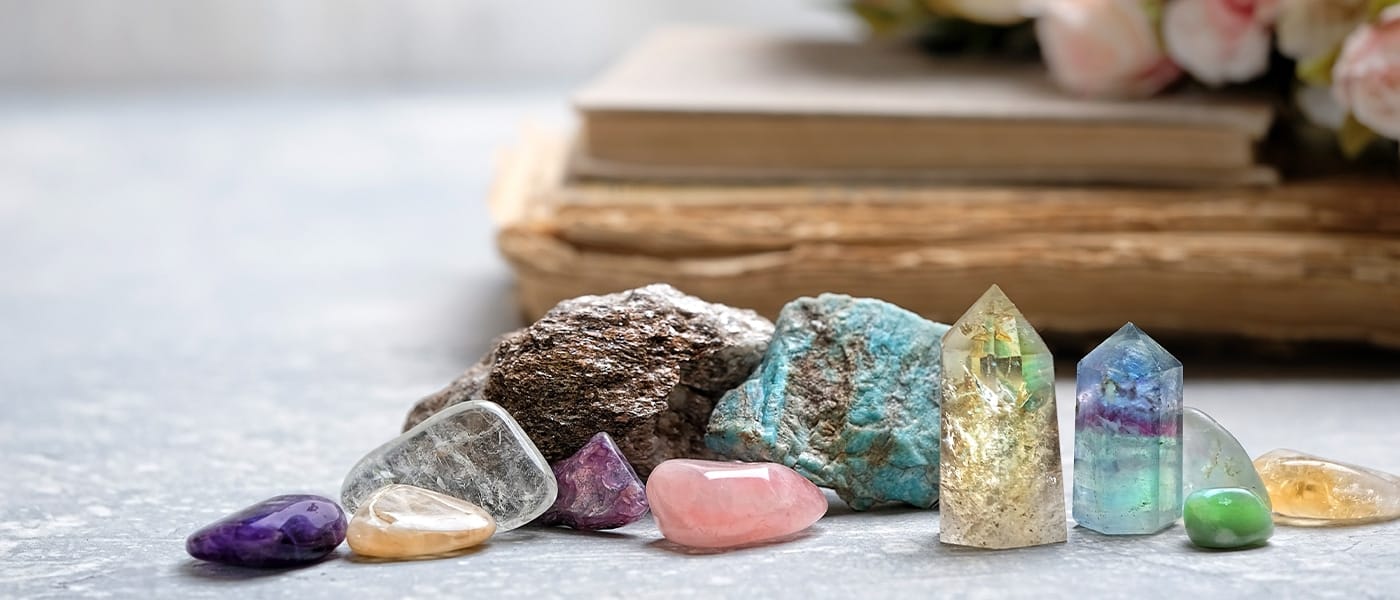Identifying gemstones sounds like an easy task. When you first start collecting gemstones, you will soon realize that there are many different things to learn. There are types of stones, crystal meanings, and uses, just to name a few. Things can get pretty confusing and overwhelming! So, where do you start? Here’s how to identify gemstones!
Where To Start
Start by knowing if you have a precious gemstone. Precious gemstones are rare and expensive stones that have been highly valued for centuries. Some precious stones include diamond sapphires, rubies, and emeralds. There is a semiprecious stone that is less expensive than precious gems but still quite valuable. Some examples include amethyst, citrine, and garnet. Finally, there are common gemstones. These aren’t as expensive as precious or semiprecious gems, but are still considered valuable by many people. Examples include rose quartz and aquamarine.
Identifying A Gemstone By Its Color
Most people will identify a gemstone by its color. This is one way to identify a gemstone, however, not the most reliable way. Some gemstones come in many different color variations. One example is garnet, this stone comes in red, green, yellow, and even dark pink. Due to color variations, it’s not ideal to identify a gemstone by its color. Color is a good way to narrow down the options of what kind of stone your gemstone may be.
A Gemstone Identified By Its Density
Gemstones, like other minerals, have chemical compositions that make them distinct from one another. This is why it’s possible to identify a gemstone by its density. A gemstone’s density is calculated by dividing its mass by its volume. The density of a gemstone can vary depending on the type of mineral it is and where it comes from. Gemstones with high densities are more likely to be found in areas with higher temperatures and pressure, such as the deep ocean floor or deep within the earth’s crust. Gemstones with low densities are more likely to be found in areas with lower temperatures and pressure, such as near hydrothermal vents or in shallow water deposits. Diamonds are an example of a gemstone with a high density because they come from deep within the earth’s crust where temperatures are high and pressure is high as well.
Observe A Gemstone’s Hardness
Gemstones are measured on the Mohs scale of hardness. The Mohs scale is a set of minerals arranged in order of their increasing hardness. You can test your gemstone’s hardness using something called the scratch test. This test involves rubbing two gems against each other to see which one scratches the other. If you want to identify a particular stone without damaging it, you can use something harder than your gemstone that won’t damage itself. For example, if you want to identify an amethyst, use another quartz variety such as citrine or a rose quartz gemstone.
Identify The Gemstone By Its Refractive Index
To identify a gemstone, you can do a refractive index test. The refractive index is the speed at which light travels through a material. If you hold a stone up to the light and look through it, you will see how much of a rainbow effect you get on the opposite side. The more colors you see, the higher the refractive index.
In order to identify your stone by its refractive index, you must have an idea of what type of gems are associated with each color. For example, if your stone shows an orange-yellow color with many rainbows, then it could be either citrine or amber. Citrine gemstone is also known as lemon quartz because of its yellow-orange color and it also has many rainbows when viewed through a refractive index tester. On the other hand, amber is also known as fossilized tree sap that has been hardened over time and has a brownish-yellow color with many rainbows when viewed through a refractive index tester.
When All Else Fails
When you still can’t identify your gemstone you can take your stone to a jeweler and they will be able to tell you what kind of stone it is. Jewelers are professionals at identifying any kind of gemstone accurately. If you suspect that your gemstone is not genuine, then you should get it tested by a reputable gemologist or geologist.
